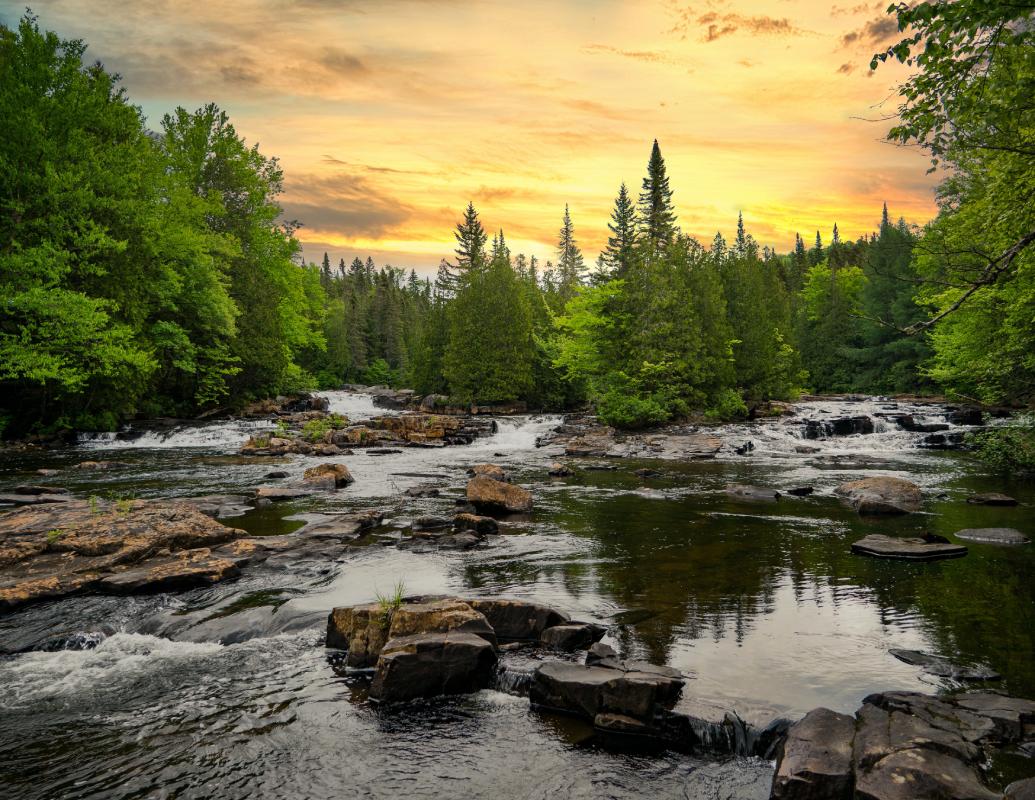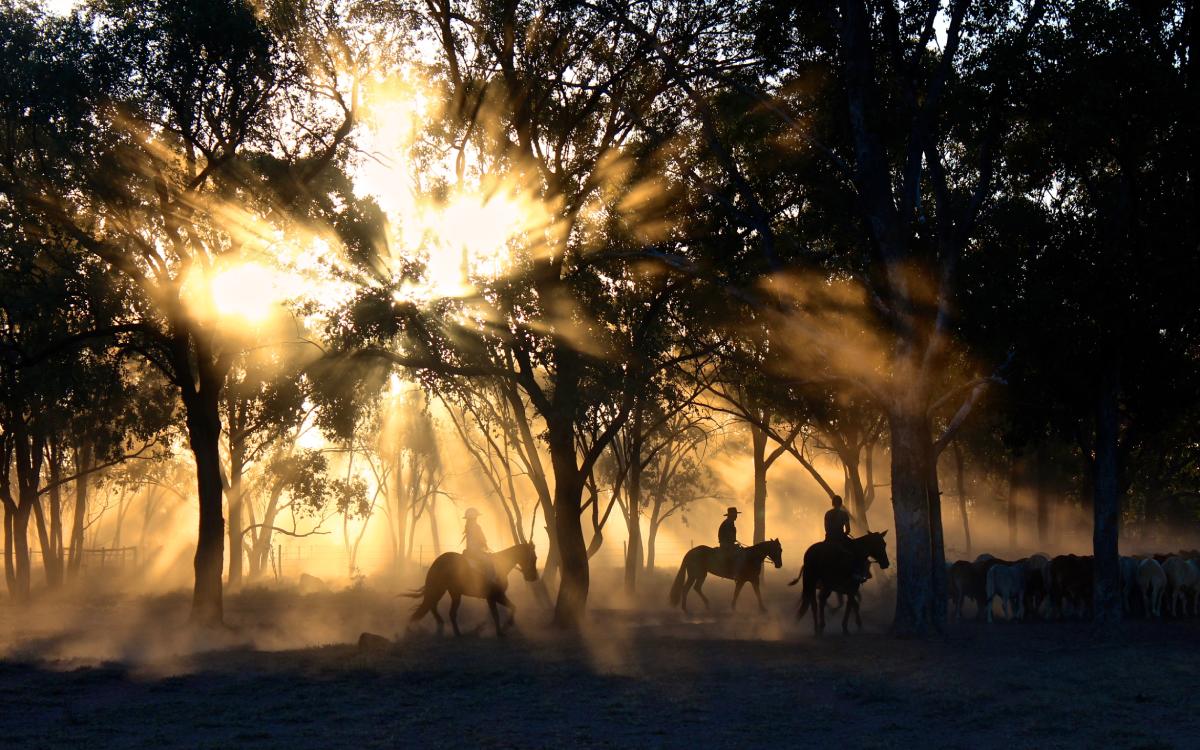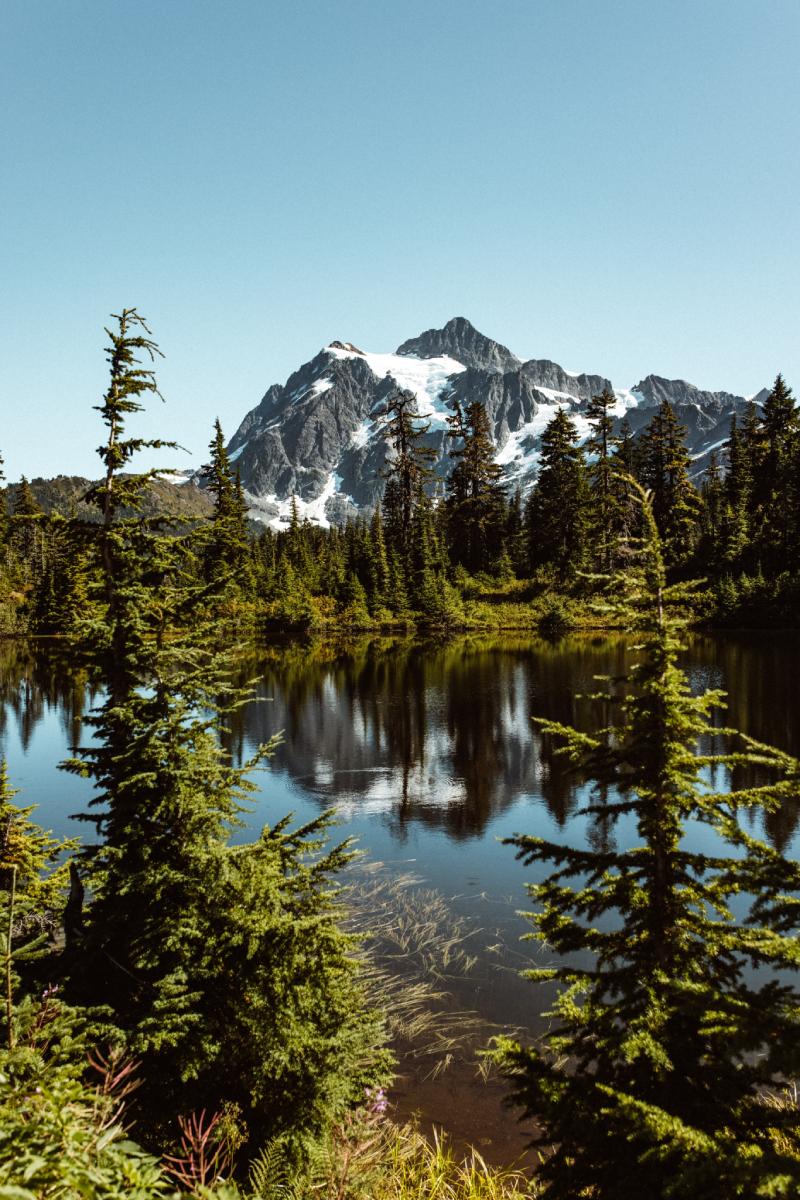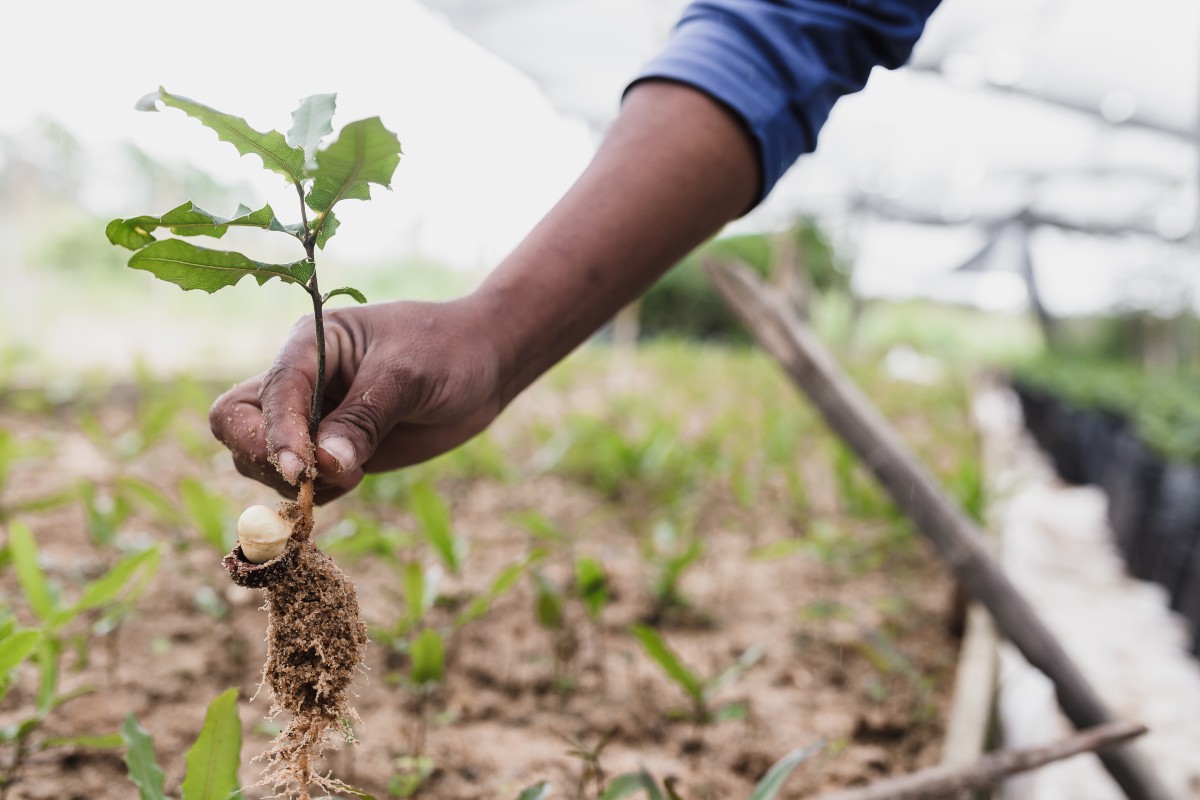Introduction
Forests play a vital role in sustaining life on Earth. They are not just clusters of trees; they are complex ecosystems that support an incredible variety of plants, animals, and microorganisms. The importance of forests cannot be overstated, as they are often referred to as the “lungs” of the Earth. In this section, we will explore the significance of forests and emphasize the critical role of forest conservation in protecting the health of our planet.
Brief Explanation of the Importance of Forests
Forests are much more than a collection of trees. They are dynamic and diverse ecosystems that provide a wide range of benefits to both nature and humanity. Forests are home to countless species, many of which are found nowhere else on Earth. They offer habitat, food, and shelter to a remarkable array of plants and animals, contributing to the planet’s overall biodiversity. Forests also serve as a source of livelihood for millions of people worldwide, providing essential resources such as timber, non-timber forest products, and medicinal plants.
Significance of Forests as the “Lungs” of the Earth
When we think of the lungs, we envision organs that enable us to breathe and sustain life. In a similar vein, forests function as the Earth’s lungs by playing a critical role in regulating the planet’s climate and atmosphere. Through the process of photosynthesis, forests absorb carbon dioxide from the atmosphere and release oxygen, acting as natural carbon sinks. They sequester vast amounts of carbon, helping to mitigate climate change by reducing the concentration of greenhouse gases in the atmosphere. Forests are essential in maintaining the delicate balance of our planet’s climate systems.
The Importance of Forest Conservation in Protecting the Planet’s Health
In light of the significant role forests play in supporting biodiversity, regulating climate, and providing invaluable ecosystem services, it is imperative that we prioritize forest conservation. Forests are facing numerous threats, including deforestation, habitat degradation, and illegal logging. The conservation and sustainable management of forests are crucial for the well-being of both current and future generations. This blog post aims to underscore the importance of forest conservation and emphasize the need for collective action to protect and restore these invaluable ecosystems.
By recognizing the significance of forests as more than just a collection of trees and understanding their role as the Earth’s lungs, we can begin to appreciate the urgent need for forest conservation. Through concerted efforts, we can safeguard these remarkable ecosystems and ensure a healthier, more sustainable future for ourselves and the generations to come.
The Role of Forests in Mitigating Climate Change
Forests play a crucial role in mitigating climate change by effectively sequestering carbon dioxide from the atmosphere and reducing greenhouse gas emissions. In this section, we will explore the various ways in which forests contribute to climate change mitigation and emphasize the importance of forest conservation in this context.

Carbon Sequestration and Storage in Forests
Forests are exceptional at capturing and storing carbon dioxide, a major greenhouse gas responsible for global warming. Through the process of photosynthesis, trees absorb carbon dioxide from the atmosphere, converting it into organic matter and releasing oxygen. The carbon is then stored in the trunks, branches, leaves, and roots of trees, as well as in the soil. This natural process, known as carbon sequestration, helps to reduce the concentration of carbon dioxide in the atmosphere, acting as a vital mechanism for climate regulation.
Forests, particularly old-growth and mature forests, have a remarkable capacity for carbon storage. Their extensive biomass and long life spans allow them to accumulate significant amounts of carbon over time. Protecting these forests from deforestation and degradation is essential for maintaining their role as effective carbon sinks.
Reduction of Greenhouse Gas Emissions through Forest Conservation
Forest conservation plays a critical role in reducing greenhouse gas emissions. When forests are destroyed or degraded, the carbon stored within them is released back into the atmosphere in the form of carbon dioxide. Deforestation, primarily driven by activities such as logging, agriculture expansion, and infrastructure development, contributes significantly to global greenhouse gas emissions.
By conserving forests and preventing deforestation, we can effectively reduce these emissions. Preserving intact forests and implementing sustainable land management practices, such as reducing the use of fire in land clearing and promoting responsible logging practices, can help minimize greenhouse gas emissions associated with forest loss.
The Impact of Deforestation on Climate Change
Deforestation has profound consequences for climate change. When forests are cleared, not only is carbon dioxide released into the atmosphere, but the loss of trees also disrupts the balance of the carbon cycle. Trees that once absorbed carbon dioxide and released oxygen are no longer present to perform this vital function.
Additionally, deforestation affects local and regional climates. Forests play a crucial role in regulating temperature and precipitation patterns through evapotranspiration, where trees release moisture into the atmosphere through their leaves. When forests are cleared, this natural cooling and moisture-regulating mechanism is disrupted, leading to changes in rainfall patterns, increased temperature extremes, and decreased water availability.
The impact of deforestation on climate change extends beyond local and regional scales. The loss of forests on a large scale contributes to the global climate crisis, exacerbating the greenhouse effect and accelerating the rate of global warming.
In conclusion, forests are indispensable in mitigating climate change. Through carbon sequestration and storage, as well as the reduction of greenhouse gas emissions, forests play a significant role in regulating the Earth’s climate systems. However, deforestation poses a severe threat to this crucial function. By prioritizing forest conservation efforts, protecting existing forests, and promoting sustainable land management practices, we can harness the immense potential of forests in mitigating climate change. In the next section, we will explore the broader ecological significance of forests and the diverse benefits they provide to both humans and the natural world.
Biodiversity and Ecosystem Services Provided by Forests
Forests are not only vital for climate regulation but also harbor a remarkable array of biodiversity and provide essential ecosystem services. In this section, we will delve into the rich biodiversity found in forests, the interdependence of species and ecosystems within these habitats, and the valuable services that forests offer to both humans and the natural world.

The Rich Biodiversity Found in Forests
Forests are renowned for their incredible biodiversity. They are home to an astounding variety of plants, animals, and microorganisms, collectively forming complex ecosystems. From towering trees to understory vegetation, from mammals and birds to insects and fungi, forests host an intricate web of life.
The vertical structure of forests, with distinct canopy, understory, and forest floor layers, creates diverse microhabitats that support different species. Trees serve as the foundation of forest ecosystems, providing shelter, food, and nesting sites for countless organisms. Understory vegetation contributes to the diversity by offering niches for specialized plants and small animals. The forest floor houses decomposers, such as fungi and insects, which play a vital role in nutrient cycling.
The remarkable biodiversity found in forests is not only a source of wonder and beauty but also holds immense ecological significance. Each species plays a unique role in maintaining the balance and functioning of the forest ecosystem.
The Interdependence of Species and Ecosystems Within Forests
Forests operate as intricate systems where species and ecosystems are interconnected and interdependent. The survival and well-being of organisms within a forest rely on the presence and interactions of other species. For instance, plants depend on pollinators like bees, butterflies, and birds for reproduction, while animals rely on plants for food and habitat.
These complex ecological relationships contribute to the stability and resilience of forest ecosystems. Biodiversity ensures the presence of a range of ecological functions, such as nutrient cycling, seed dispersal, and pest control. Each species, regardless of its size or visibility, plays a vital role in maintaining the overall health and productivity of the forest ecosystem.
Forests as Providers of Essential Ecosystem Services
Forests provide essential ecosystem services that are vital for both human well-being and the functioning of the natural world. These services include:
Carbon Sequestration and Climate Regulation
Forests are formidable carbon sinks, absorbing and storing large amounts of carbon dioxide from the atmosphere. Through photosynthesis, trees convert carbon dioxide into organic matter and release oxygen, helping to mitigate climate change by reducing greenhouse gas concentrations.
Habitat and Biodiversity Conservation
Forests serve as critical habitats for countless species, providing food, shelter, and breeding grounds. By preserving forests, we protect the diverse array of species that depend on these habitats for their survival. Conserving forest biodiversity contributes to the preservation of global biodiversity as a whole.
Water Regulation and Watershed Protection
Forests play a vital role in regulating water cycles. They act as natural sponges, absorbing rainfall and releasing it gradually, which helps to prevent floods and maintain stable water levels in rivers and streams. Forests also serve as natural filters, purifying water by trapping sediments and filtering out pollutants, thus ensuring clean and freshwater supplies.
Soil Conservation and Nutrient Cycling
The dense root systems of trees help to prevent soil erosion by anchoring the soil and reducing the impact of rainfall. Forests also contribute to nutrient cycling, as fallen leaves and organic matter decompose, enriching the soil with essential nutrients for plant growth.
Recreational and Cultural Values
Forests provide recreational spaces for outdoor activities and offer opportunities for relaxation, connection with nature , and cultural experiences. Forests hold immense cultural significance for indigenous communities, serving as sites for spiritual practices, traditional knowledge transmission, and cultural celebrations.
In conclusion, forests are not only home to remarkable biodiversity but also offer a wide range of ecosystem services that are indispensable for human well-being and the health of the planet. Preserving and conserving forests is crucial to maintain the interdependent relationships among species, sustain biodiversity, and ensure the continued provision of vital ecosystem services. In the next section, we will explore the threats faced by forests and the importance of effective forest conservation strategies.
Forests as Watersheds and Water Regulators
Forests play a vital role in maintaining water cycles, regulating water flow, and protecting watersheds. In this section, we will explore how forests contribute to the functioning of watersheds, the prevention of soil erosion, and the profound impact of deforestation on water resources.

Forests’ Role in Maintaining Water Cycles and Regulating Water Flow
Forests are intricate components of the water cycle, ensuring the availability and quality of freshwater resources. Through a process called transpiration, trees release water vapor into the atmosphere, which eventually condenses and forms clouds. This process contributes to rainfall patterns and helps to maintain regional and global water cycles.
Furthermore, forests act as natural sponges, intercepting rainfall and allowing water to infiltrate the soil. This infiltration replenishes groundwater reserves and helps to regulate the flow of water in rivers, streams, and aquifers. Forests also help to prevent excessive runoff, which can lead to floods and soil erosion, by absorbing and gradually releasing water over time.
Protection of Watersheds and Prevention of Soil Erosion
Watersheds, also known as drainage basins, are areas of land where all the water drains into a common waterbody, such as a river or lake. Forests play a crucial role in protecting and preserving the integrity of watersheds. The dense canopy of trees intercepts rainfall, reducing the impact of raindrops on the soil surface and minimizing soil erosion. The roots of trees also bind the soil together, preventing it from being washed away by heavy rains or flowing water.
When forests are cleared or degraded through activities like logging or agriculture, the protective barrier against soil erosion is lost. Rainfall directly hits the exposed soil, leading to increased runoff, sedimentation in water bodies, and the degradation of aquatic ecosystems. Soil erosion not only reduces water quality but also reduces the water-holding capacity of the land, impacting agricultural productivity and exacerbating drought conditions.
The Impact of Deforestation on Water Resources
The alarming rate of deforestation globally has significant consequences for water resources. Deforestation disrupts the water cycle, leading to adverse effects such as reduced rainfall, altered rainfall patterns, and increased water scarcity in affected regions. When forests are cleared, the evapotranspiration process is disrupted, resulting in decreased moisture in the air and potentially affecting precipitation patterns.
Additionally, deforestation contributes to increased runoff and sedimentation in rivers and streams. The loss of forest cover exposes the soil to erosion, causing sediment and pollutants to be carried into water bodies. This not only degrades water quality but also reduces the capacity of reservoirs and impacts aquatic ecosystems, including fish populations and other freshwater species.
The impact of deforestation on water resources extends beyond local areas. Forests, through their role in regulating water flow, contribute to the maintenance of regional and even global hydrological cycles. The loss of forest cover in one region can have far-reaching consequences for water availability and quality in distant areas.
In conclusion, forests play a crucial role in maintaining water cycles, regulating water flow, and protecting watersheds. The preservation and conservation of forests are essential for ensuring the availability of freshwater resources, mitigating soil erosion, and safeguarding the health of aquatic ecosystems. In the next section, we will explore additional ecosystem services provided by forests and highlight the importance of conserving these invaluable natural habitats.
Indigenous Communities and Forest Stewardship
Indigenous communities around the world have long played a vital role in the conservation of forests. Their deep connection to the land, traditional knowledge, and sustainable forest management practices contribute significantly to the preservation of these invaluable ecosystems. In this section, we will explore the importance of indigenous communities in forest conservation, their sustainable practices, and the collaborative efforts between these communities and conservation organizations.

The Vital Role of Indigenous Communities in Forest Conservation
Indigenous communities have a profound understanding of the forests they inhabit. They possess a wealth of traditional knowledge and a spiritual connection to the land that has been passed down through generations. This knowledge encompasses intricate insights into the ecology, medicinal properties of plants, and sustainable resource management practices. Indigenous communities have demonstrated their profound commitment to the stewardship of forests, as they recognize that the well-being of their communities is intricately linked to the health of the surrounding ecosystems.
Indigenous peoples often have a holistic view of nature, considering forests not merely as a source of timber or economic gain but as complex ecosystems with spiritual, cultural, and social significance. They understand the delicate balance between humans and nature and promote the sustainable use of forest resources to ensure their longevity for future generations.
Traditional Knowledge and Sustainable Forest Management Practices
The traditional knowledge held by indigenous communities offers valuable insights into sustainable forest management practices. Their intimate knowledge of local flora and fauna, ecological relationships, and natural resource dynamics allows them to develop practices that maintain the ecological integrity of forests while meeting their communities’ needs.
Sustainable forest management practices employed by indigenous communities often involve selective harvesting, rotational farming, and the protection of sacred or culturally significant areas within the forest. These practices prioritize the regeneration of forest resources and ensure the preservation of biodiversity, soil health, and water quality. By working in harmony with nature, indigenous communities showcase the compatibility of human livelihoods and environmental conservation.
Collaborative Efforts Between Indigenous Communities and Conservation Organizations
Recognizing the invaluable contributions of indigenous communities, many conservation organizations actively engage in collaborative efforts to support and amplify their conservation efforts. These partnerships foster a mutual exchange of knowledge and empower indigenous communities to protect and manage their ancestral lands effectively.
Collaborative initiatives often involve combining traditional ecological knowledge with scientific research and modern conservation approaches. By integrating indigenous perspectives into conservation strategies, organizations can develop more holistic and culturally sensitive approaches to forest management. These partnerships also help raise awareness about the importance of indigenous rights, land tenure, and the role of indigenous communities as stewards of the land.
Furthermore, collaborations between indigenous communities and conservation organizations can lead to the establishment of community-led conservation areas, indigenous-led protected areas, or co-management agreements. These initiatives not only enhance forest protection but also provide opportunities for indigenous communities to benefit economically through sustainable ecotourism, traditional crafts, and the preservation of cultural heritage.
In conclusion, indigenous communities are at the forefront of forest conservation efforts. Their traditional knowledge, sustainable practices, and spiritual connection to the land are invaluable assets in preserving the Earth’s lungs. Collaborative partnerships between indigenous communities and conservation organizations offer promising avenues for the effective stewardship of forests, ensuring the protection of biodiversity, cultural heritage, and the long-term sustainability of these vital ecosystems. In the next section, we will explore the broader implications of forest conservation and its impact on global sustainability.
Threats to Forests and Conservation Challenges
Forests, the lungs of our planet, face numerous threats and conservation challenges that undermine their crucial role in maintaining a healthy and sustainable environment. In this section, we will explore some of the primary threats to forests and the challenges associated with their conservation.

Deforestation and its Causes
Deforestation, the permanent removal of forests, remains one of the most significant threats to global forest ecosystems. The causes of deforestation are multifaceted and often interconnected. Agricultural expansion, including commercial farming and subsistence agriculture, is a leading driver of deforestation. Large-scale clearing of forests for cattle ranching, soybean plantations, and palm oil production contributes to extensive deforestation in many regions.
Other factors contributing to deforestation include infrastructure development, such as road construction and mining activities, which often result in widespread forest fragmentation. Additionally, urbanization and population growth can lead to the conversion of forests into settlements and industrial areas. Illegal logging, driven by demand for timber products, also plays a significant role in deforestation.
Illegal Logging and Unsustainable Timber Harvesting
Illegal logging poses a severe threat to forests worldwide. It involves the unauthorized extraction and trade of timber, often in violation of environmental regulations and the rights of local communities. Illegal logging not only contributes to deforestation but also undermines sustainable forest management practices.
Unsustainable timber harvesting, even when conducted legally, can deplete forests and disrupt ecosystems. When trees are excessively harvested without adequate measures for regeneration, it diminishes the capacity of forests to provide ecosystem services and support biodiversity. Poor logging practices, such as clear-cutting and selective logging without proper planning and monitoring, can have long-lasting negative impacts on forest ecosystems.
Lack of Policy Enforcement and Governance in Forest Conservation
Effective policy enforcement and governance are crucial for the successful conservation of forests. In some regions, weak governance, corruption, and inadequate law enforcement contribute to rampant illegal activities, including illegal logging and encroachment into protected areas. Insufficient resources and capacity to monitor and control forest activities further exacerbate the problem.
Lack of coordination and integration among different sectors and stakeholders can also pose challenges to forest conservation. The complexities of land tenure, conflicting interests between various user groups, and limited participation of local communities in decision-making processes hinder effective forest governance. Strengthening policies, promoting transparency, and ensuring the active involvement of local communities in forest management are essential steps to overcome these challenges.
In conclusion, forests face significant threats, primarily driven by deforestation, illegal logging, and weak governance. Addressing these challenges requires a multi-faceted approach that involves sustainable land use planning, effective law enforcement, and the active participation of local communities and stakeholders. By addressing these threats and enhancing forest conservation efforts, we can protect the vital ecological services provided by forests, preserve biodiversity, mitigate climate change, and ensure the long-term sustainability of our planet’s “lungs.” In the next section, we will explore the importance of individual and collective actions in supporting forest conservation.
Conservation Strategies and Initiatives
To safeguard the invaluable benefits provided by forests and combat the threats they face, various conservation strategies and initiatives have been implemented worldwide. In this section, we will explore some of the key approaches to forest conservation.

Protected Areas and National Parks for Forest Conservation
Establishing protected areas and national parks is a fundamental strategy for conserving forests and their biodiversity. These designated areas provide legal protection and management frameworks to preserve the ecological integrity of forests. Protected areas not only safeguard forest habitats but also contribute to maintaining connectivity between different ecosystems.
Protected areas can take various forms, such as nature reserves, wildlife sanctuaries, and strict nature reserves. These designations restrict human activities that may harm forests, such as logging, mining, and unsustainable agriculture. By preserving these areas, we ensure the long-term viability of forest ecosystems and the species that depend on them.
Examples of successful protected area initiatives include the Amazon Rainforest Protected Areas in Brazil, the Central Cardamom Protected Forest in Cambodia, and the Yellowstone National Park in the United States. These protected areas have played a vital role in preserving vast expanses of forest, conserving biodiversity, and promoting scientific research and education.
Sustainable Forestry Practices and Certification Systems
Adopting sustainable forestry practices is crucial for maintaining the balance between meeting human needs for timber and other forest products while preserving forest ecosystems. Sustainable forest management seeks to ensure the long-term productivity of forests while protecting biodiversity, water resources, and other ecosystem services.
Certification systems, such as the Forest Stewardship Council (FSC) and the Programme for the Endorsement of Forest Certification (PEFC), provide standards and guidelines for responsible forest management. These systems help consumers make informed choices by promoting the purchase of products sourced from sustainably managed forests. By supporting certified products, individuals and businesses contribute to the demand for sustainable forestry practices.
Sustainable forestry practices include selective logging, which targets specific trees for harvest while leaving the surrounding forest intact. It also involves reforestation efforts to restore degraded areas, the use of agroforestry systems that combine trees with agricultural crops, and the implementation of fire management plans to prevent destructive wildfires.
Reforestation and Afforestation Programs
Reforestation and afforestation programs play a vital role in restoring and expanding forest cover. Reforestation involves planting trees in areas that were previously forested but have been cleared or degraded. Afforestation, on the other hand, involves establishing forests in areas where they did not exist before, such as on barren lands or abandoned agricultural fields.
These programs aim to enhance biodiversity, restore ecosystem functions, and mitigate climate change by sequestering carbon dioxide from the atmosphere. They also contribute to improving water regulation, soil conservation, and providing habitat for wildlife.
Numerous organizations and initiatives are engaged in large-scale reforestation and afforestation efforts globally. For instance, the Bonn Challenge aims to restore 350 million hectares of degraded and deforested land by 2030, contributing to global forest restoration and climate change mitigation goals. The Trillion Trees Initiative is another prominent effort that seeks to plant one trillion trees worldwide.
In conclusion, a combination of protected areas, sustainable forestry practices, and reforestation and afforestation programs are key strategies for forest conservation. By establishing and maintaining protected areas, promoting sustainable forest management, and actively participating in reforestation initiatives, we can protect the essential functions of forests, mitigate climate change, and secure a healthier and more sustainable future for our planet. In the next section, we will explore the role of individuals in supporting forest conservation.
Individual Actions for Forest Conservation
While large-scale conservation efforts and policies play a significant role in forest preservation, individuals also have a crucial part to play in protecting our forests. By taking conscious actions in our daily lives, we can contribute to the conservation of these vital ecosystems. Here are some individual actions you can take to support forest conservation:

Supporting Sustainable and Responsible Wood Products
One way to contribute to forest conservation is by making informed choices when purchasing wood products. Look for products certified by reputable organizations such as the Forest Stewardship Council (FSC) or the Programme for the Endorsement of Forest Certification (PEFC). These certifications ensure that the wood comes from sustainably managed forests, where ecological values and local communities are respected.
Additionally, consider using alternatives to wood when possible. Opt for furniture made from recycled materials or materials like bamboo, which are renewable and grow quickly. By supporting sustainable and responsible wood products, you encourage the demand for environmentally friendly practices in the forestry industry.
Reducing Personal Ecological Footprint
Reducing your personal ecological footprint can indirectly contribute to forest conservation. By adopting sustainable lifestyle choices, you minimize the need for excessive resource consumption and land conversion. Here are some actions you can take:
- Conserve energy: Reduce energy consumption by using energy-efficient appliances, turning off lights when not in use, and adjusting your thermostat.
- Practice sustainable agriculture: Support sustainable agriculture practices that minimize deforestation for farmland expansion. Choose organic and locally produced food to reduce the carbon footprint associated with transportation.
- Limit paper usage: Reduce paper waste by opting for digital documents, using both sides of paper when printing, and recycling paper products.
- Minimize water consumption: Conserve water by fixing leaks, using water-efficient fixtures, and practicing responsible water usage in your daily routines.
By making these small changes in your lifestyle, you contribute to minimizing the pressure on forests and their resources.
Participating in Tree Planting and Reforestation Initiatives
Engaging in tree planting and reforestation initiatives is a tangible way to make a direct impact on forest conservation. Many organizations and community groups organize tree planting events and programs to restore degraded areas and create new forest habitats. Participating in these initiatives not only helps sequester carbon dioxide but also contributes to enhancing biodiversity and protecting watersheds.
Consider joining local tree planting events or volunteer with organizations dedicated to reforestation efforts. You can also support these initiatives by donating to tree planting projects or sponsoring tree plantations. By actively participating in tree planting and reforestation, you become an agent of positive change for the health and sustainability of our forests.
In conclusion, individual actions are crucial in supporting forest conservation. By choosing sustainable wood products, reducing your ecological footprint, and actively participating in tree planting and reforestation initiatives, you can play a part in protecting and preserving our Earth’s invaluable forests. Remember, even small actions can make a significant difference when we all come together in the pursuit of a sustainable future.
Conclusion
Forests are not only majestic and awe-inspiring, but they also play a crucial role in maintaining the health and balance of our planet. Throughout this article, we have explored the immense importance of forest conservation in protecting Earth’s lungs. Let’s take a moment to recap and reiterate the significance of our collective efforts in preserving these invaluable ecosystems.

Recap of the Importance of Forest Conservation
Forests are more than just a collection of trees. They are complex and interconnected ecosystems that provide a myriad of benefits. Forests act as the “lungs” of the Earth by sequestering carbon dioxide, mitigating climate change, and maintaining the delicate balance of our atmosphere. They are home to an astonishing array of biodiversity, with countless species relying on forests for habitat, food, and survival. Forests also play a vital role in regulating water cycles, preventing soil erosion, and providing essential ecosystem services upon which we all depend.
Call to Action for Individuals, Communities, and Governments
The urgency of forest conservation requires action at multiple levels. Each and every one of us has a role to play in safeguarding these critical ecosystems. Individuals can make a difference by supporting sustainable wood products, reducing their ecological footprint, and actively participating in tree planting and reforestation initiatives. Communities can organize awareness campaigns, establish local conservation programs, and engage in sustainable land management practices. Governments must prioritize forest conservation through robust policies, effective law enforcement, and international collaborations.
Emphasizing the Urgent Need for Global Cooperation
Forest conservation is a global issue that requires collective action and cooperation. It transcends boundaries, political divisions, and individual interests. It is an endeavor that unites us all in our shared responsibility to protect and preserve the Earth’s invaluable forests. We must foster international collaborations, strengthen existing agreements, and forge new partnerships to address the challenges that threaten our forests. By working together, we can create a sustainable future where forests continue to thrive, providing us with clean air, water, biodiversity, and a stable climate.
In conclusion, the importance of forest conservation cannot be overstated. Forests are not only essential for the well-being of countless species but also for the overall health of our planet. They are our greatest allies in mitigating climate change, supporting biodiversity, regulating water resources, and providing us with invaluable ecosystem services. It is up to us to recognize their worth and take decisive action. Let us embrace the call to protect and restore our forests, leaving a legacy of a greener and more sustainable world for generations to come. Together, we can safeguard Earth’s lungs and secure a vibrant and resilient future for all.

